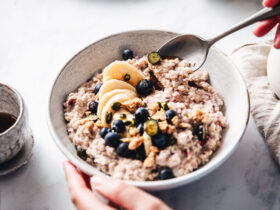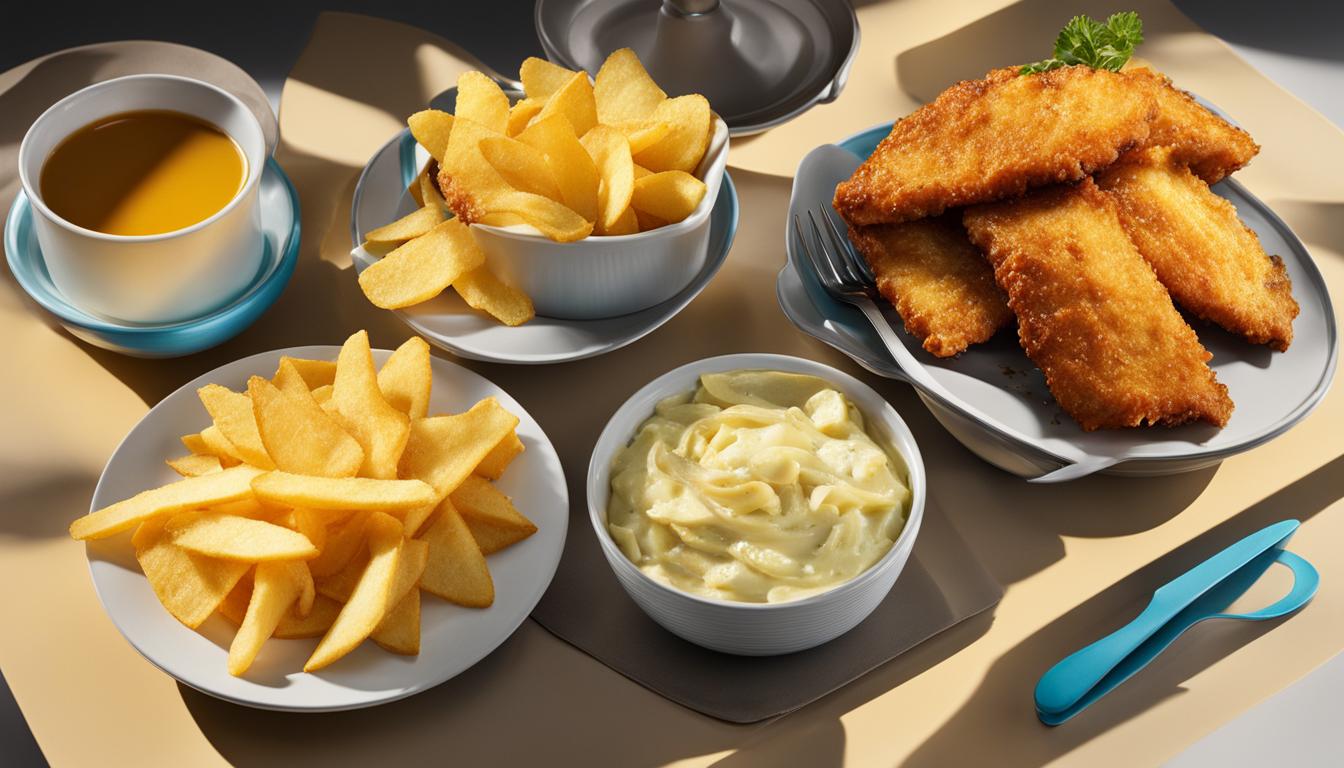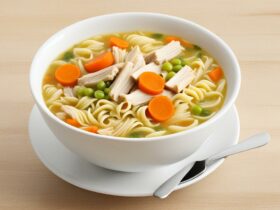Fish and chips is a beloved comfort food in the UK, but many people are unaware of its caloric content. In this article, we will dive into the nutritional details to uncover how many calories are in a serving of fish and chips. This information can help individuals make informed choices about their food consumption and maintain a healthy diet.
Key Takeaways:
- Many people may be unaware of the caloric content in fish and chips.
- The average serving of fish and chips contains around 1000 calories.
- The fish itself contributes to the majority of the calorie count.
- Portion control and healthier cooking methods can help reduce calorie intake.
- Menu calorie labeling is becoming more important in providing consumers with accurate information.
The Origins of Fish and Chips
Fried fish has been enjoyed since the 17th century and was introduced to England by Western Sephardic Jews. The first fish and chip shop was opened in 1860 by Joseph Malin, an Ashkenazi Jewish immigrant, in Bow, London.
The development of railways allowed for fresh fish to be easily transported to cities, making fish and chips a popular meal among the working class.
This iconic British dish quickly gained popularity, and fish and chip shops began popping up all over the country. They soon became an essential part of British culinary culture and a symbol of traditional British fare.
The combination of crispy fried fish and golden chips proved to be a winning combination, winning the hearts and stomachs of people from all walks of life. Fish and chips became the go-to meal for families, workers, and even seaside tourists.
Today, fish and chips still remain a cherished dish in the UK and can be found in countless fish and chip shops all across the country. It has even gained international recognition as a must-try British delicacy.
Next, we will explore the caloric content of fish and chips and uncover how many calories are in a serving of this beloved dish.
The Caloric Content of Fish and Chips
A typical serving of fish and chips contains approximately 1000 calories. The caloric content can vary depending on the portion size and the cooking method used. For example, a 6 oz. portion of fish with 10 oz. of chips and 4 oz. of mushy peas has an average of 1086 calories. The fish itself contributes to the majority of the calories, with a 6 oz. portion of cod containing around 240 calories. The chips, fried in various mediums such as rapeseed oil or beef dripping, also add to the calorie count.
Quick Tip: For a lower calorie option, consider grilling the fish instead of frying it and opting for a smaller portion size.
Comparative Caloric Content
| Food Item | Calories |
|---|---|
| Fried Cod (6 oz.) | 240 |
| Fried Haddock (6 oz.) | 264 |
| Fried Plaice (6 oz.) | 258 |
| Chips (10 oz.) | 363 |
| Mushy Peas (4 oz.) | 79 |
As illustrated in the table above, the calorie count can vary depending on the type of fish chosen and the portion size. It’s important to consider these factors when making choices about your diet.
Impact of Portion Size on Calories
The portion size of fish and chips can have a significant impact on the total calorie intake. It is important to consider portion control when enjoying this beloved dish as part of a balanced diet. Even if the fish is cooked in a healthier manner, such as grilling instead of frying, large portion sizes can still result in a high calorie count.
For example, a larger portion of fish with 10 oz. of chips can have a total of 998.8 calories. This is significantly higher than a smaller portion size. Therefore, it’s crucial to be mindful of the quantity when indulging in fish and chips to maintain a healthy calorie intake.
By practicing portion control, you can still enjoy fish and chips without exceeding your calorie limits. Opting for smaller servings or sharing a larger portion with a friend can help reduce the calorie intake while savoring the flavors of this classic dish.
Benefits of Opting for Low-Calorie Fish and Chips
Choosing low-calorie options when it comes to fish and chips can help you satisfy your cravings while maintaining a healthy diet. Here are some benefits of opting for low-calorie fish and chips:
- Weight Management: Low-calorie fish and chips can be a great choice for individuals looking to manage their weight. By reducing the overall calorie intake, you can create a calorie deficit, which can contribute to weight loss or weight maintenance.
- Heart Health: Consuming low-calorie fish and chips can be beneficial for heart health. High-calorie diets can increase the risk of heart disease, while low-calorie options can help reduce that risk.
- Nutritional Balance: Low-calorie fish and chips can be part of a well-balanced diet that provides essential nutrients while limiting excess calories. Including a variety of vegetables or a side salad can further enhance the nutritional value of the meal.
By making mindful choices about portion size and opting for low-calorie fish and chips, you can enjoy this traditional dish guilt-free. Remember, it’s all about finding the right balance between indulgence and a healthy lifestyle.
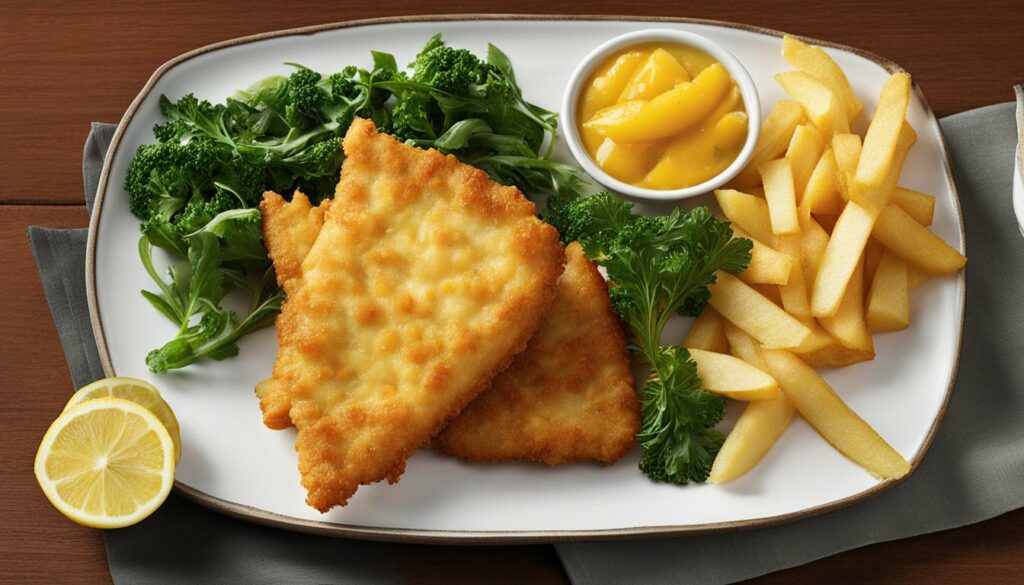
| Portion Size | Calories |
|---|---|
| Larger portion of fish with 10 oz. of chips | 998.8 |
| Smaller portion of fish with 6 oz. of chips | 565.3 |
Public Perception and Legislation
As consumers become increasingly health-conscious, there is a growing demand for more transparency when it comes to the calorie content of food. People want to make informed choices about their diet and understand the impact of the food they consume on their overall health and well-being. Menu calorie labeling has emerged as a popular solution, allowing individuals to easily assess the nutritional value of dishes when dining out.
Surveys have shown that a majority of people support menu calorie labeling and believe that it can help them make healthier choices. By providing clear and accurate information about the calorie content of food, individuals can better manage their calorie intake and align it with their specific dietary needs and goals. Menu calorie labeling empowers consumers to take control of their health and make conscious decisions about the food they consume.
The UK government has recognized this growing public interest and intends to introduce legislation to make calorie labeling compulsory in the out-of-home sector, including restaurants, cafes, and takeaways. This initiative aims to ensure that consumers are provided with accurate and consistent information when dining out, enabling them to make informed decisions about their food consumption.
By implementing government legislation for calorie labeling, individuals will have access to standardized information across different establishments, making it easier for them to compare the nutritional value of various menu items. This will facilitate healthier choices and help individuals maintain a balanced diet even when eating away from home.
Menu calorie labeling empowers consumers with the knowledge they need to make informed decisions about their health, while government legislation ensures that this information is readily available and accessible. This combined effort encourages healthier food choices and contributes to the overall well-being of the population.
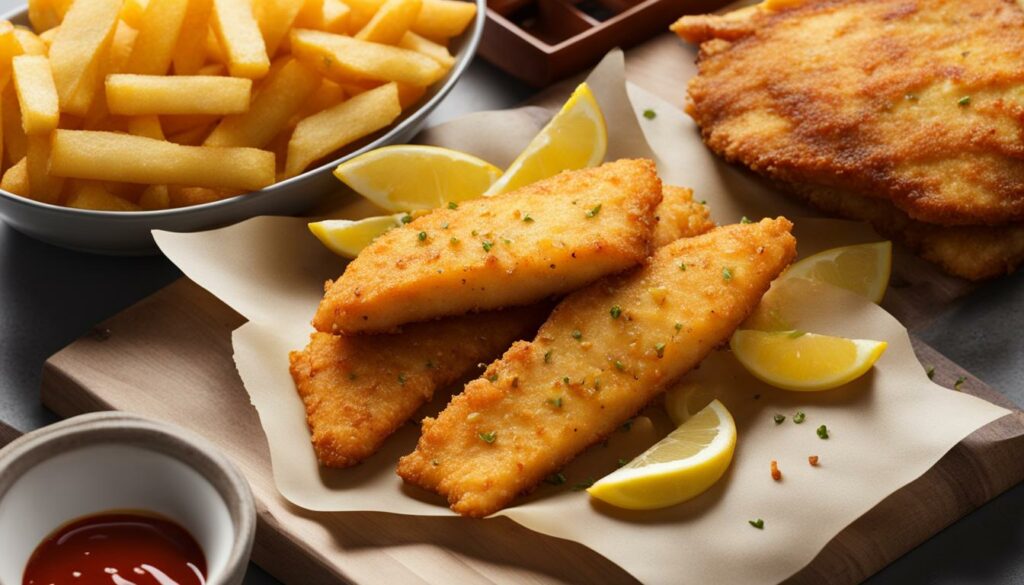
“Providing consumers with accurate information about the calorie content of food is essential for promoting healthier eating habits and tackling the obesity epidemic.” – Dr. Sarah Thompson, Nutrition Expert
Conclusion
When it comes to enjoying fish and chips, it’s important to be mindful of its caloric content. On average, a serving of fish and chips contains around 1000 calories, with the fish and portion size being the main contributors. To manage the calorie count, practicing portion control and opting for healthier cooking methods can make a difference.
By being aware of the caloric content, individuals can make informed choices about their food intake and promote healthier eating habits. It’s worth noting that the fish itself contains fewer calories compared to the chips, so balancing the portion sizes can help reduce the overall calorie count.
In response to the growing demand for transparency, initiatives like menu calorie labeling have gained traction. Government legislation is being introduced to make calorie labeling compulsory in the out-of-home sector, such as restaurants, cafes, and takeaways. This will provide consumers with accurate information to make mindful decisions about their food consumption.
Incorporating fish and chips into a balanced diet is possible; however, it’s crucial to consider the caloric impact. With portion control and awareness of cooking methods, individuals can indulge in this beloved comfort food while maintaining a healthy lifestyle. So, next time you’re craving fish and chips, remember to make informed choices to enjoy it guilt-free.
FAQ
How many calories are in a serving of fish and chips?
A typical serving of fish and chips contains approximately 1000 calories.
What contributes to the caloric content of fish and chips?
The fish itself contributes to the majority of the calories, with a 6 oz. portion of cod containing around 240 calories. The chips, fried in various mediums such as rapeseed oil or beef dripping, also add to the calorie count.
Does portion size affect the calorie intake of fish and chips?
Yes, the portion size of fish and chips plays a significant role in the total calorie intake. Even if the product is cooked in a healthy manner, larger portion sizes can result in high calories.
Can fish and chips be part of a healthy diet?
Fish and chips can be enjoyed as part of a balanced diet. It is important to be aware of its caloric content and practice portion control. Choosing healthier cooking methods, such as grilling the fish instead of frying, can also help reduce the calorie count.
Is there public interest in calorie labeling for food?
Yes, there is growing public interest in having more transparency regarding the calorie content of food. Surveys have shown that a majority of people support menu calorie labeling and believe that it can help them make healthier choices.
What is the UK government doing to address calorie labeling?
The UK government intends to introduce legislation to make calorie labeling compulsory in the out-of-home sector, including restaurants, cafes, and takeaways. This initiative aims to provide consumers with accurate information to make informed decisions about their food consumption.


